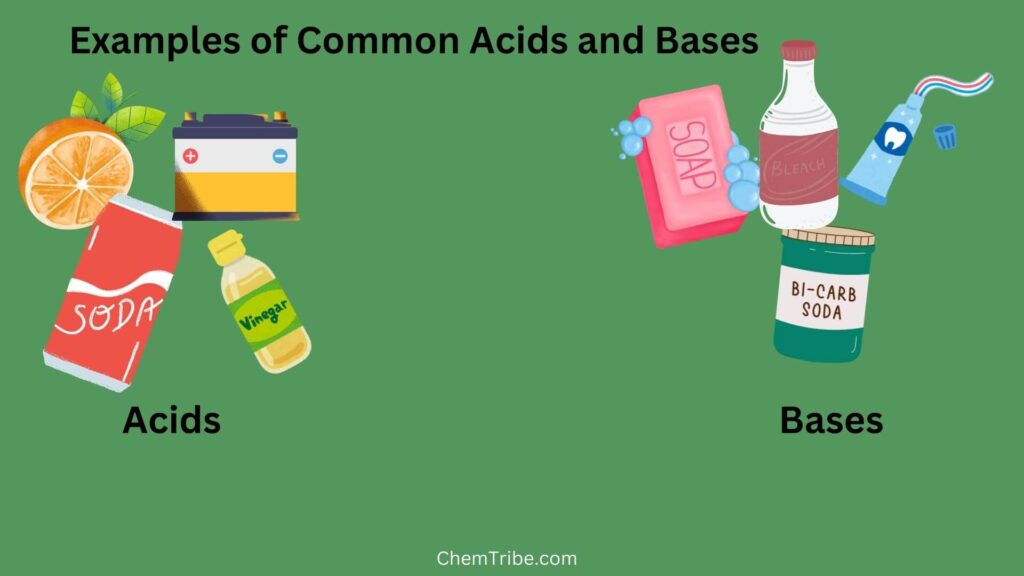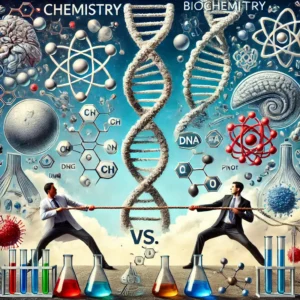Acids and bases are everywhere. When you squeeze a lemon to make lemonade, the juice is an acid. If your TV remote operates on battery power, the batteries contain acids. Acids flow through our bodies, aiding in food digestion and even facilitating muscle building. And what about bases? Well, if you washed your hands today, you likely used soap, which is a base.

What Are Acids And Bases?
Acids and bases are defined by their properties. The word acid is derived from the Latin word, acidus, which means sour. Lemon juice tastes sour because it has citric acid. So, the first definition of acid is: A substance with a sour taste. Apart from sour tastes, substances can also have other properties that define them as acids, including:
- Acids dissolve in water to form hydrogen ions as the only positive ions.
- Acids contain bound hydrogen gas which can be displaced by a reactive metal
- Acids reacts with a base to form salt and water only
Like acids, Bases also have properties that define them as bases. For instance, bases taste bitter (but bases are not food and should never be tasted). Bases also feel slippery or soapy feel. Substances can also have other properties that define them as bases, including:
- Bases can neutralize acids to form salt and water only.
- Bases can dissolve in water to form hydroxide ions as the only negative ions. Bases are usually oxides and hydroxides of metals
Types of Acids and Bases
Acids
Acids can be classified into two main categories: organic acids and mineral acids.
Organic acids are derived from living organisms or once-living matter. They are commonly found in fruits, vegetables, and other organic materials. Here are a few examples:
| Organic Acid | Where Found |
| Citric acid | Citrus fruits (like lemons and oranges |
| Lactic acid | Sour milk |
| Acetic (ethanoic) acid | Vinegar |
| Tartaric acid | Grapes |
| Formic (Methanoic acid) | Bee and ant stings, stinging needles |
| Ascorbic Acid | Fruits (such as oranges, strawberries, kiwi, and guava) and vegetables (like bell peppers, broccoli, and tomatoes) |
| Butyric Acid | Butter, cheese, and other dairy products |
Mineral acids are typically made in the laboratory from inorganic sources such as minerals or via industrial processes. : Common examples of mineral acids include hydrochloric acid (HCl), sulfuric acid (H₂SO₄), and nitric acid (HNO₃).
Acids are further classified into strong and weak acids.
Strong acids can eat into metal or burn skin or clothes if they are spilled in them. They are said to be corrosive. Many mineral acids (not all) tend to be strong acids.
Weak acids are generally less potent than strong acids. They are less corrosive than their strong counterparts and don’t immediately eat through materials or cause severe damage.
However, they can still have adverse effects. For instance, they may cause irritation or burns if they come into contact with the skin or eyes, albeit to a lesser extent than strong acids. They can also corrode certain metals over time, albeit at a slower rate compared to strong acids. So, they should still be handled cautiously to avoid potential harm. Many organic acids (not all) tend to be weak acids.
Chemically, strong acids completely dissociate into ions (H⁺ and an anion) when dissolved in water. This means that nearly all of the acid molecules break apart into ions. On the other hand, weak acids only partially dissociate into ions when dissolved in water. This means that only a small fraction of the acid molecules break apart into ions.
Bases
Bases can also be categorized into soluble and insoluble bases. Most bases are insoluble in water. But a few are soluble. The soluble ones are commonly referred to as alkalis. Examples include sodium hydroxide and potassium hydroxide, which are highly soluble in water and are called strong bases. Like strong bases, strong alkalis are very corrosive and should be handled with care.
Bases that are sparingly soluble or insoluble in water are called weak bases. They are not as corrosive as their strong bases counterparts. Examples of weak bases include ammonia (NH₃), ammonium hydroxide (NH₄OH), and carbonates (e.g., sodium carbonate, Na₂CO₃).
Chemically, strong bases completely dissociate into ions (OH⁻ and a cation) when dissolved in water. This means that nearly all of the base molecules break apart into ions. On the other hand, weak bases only partially dissociate into ions when dissolved in water. This means that only a small fraction of the base molecules break apart into ions.
Uses of Acids and Bases
Uses of Acids
| Acid | Uses |
| Hydrochloric acid | To clean metal surfaces |
| Carbonic acid | Used in aerated drinks to enhance taste |
| Sulphuric acid | Used in car batteries, manufacture of fertilizer, etching of metals, manufacture of paints and detergents |
| Nitric (V) acid | Manufacture of dyes, paints, explosives, and fertilizers |
| Ethanoic acid | Used as flavor in foods |
| Acetic acid | As a flavoring agent and preservative in food and beverages. Used in the production of plastics, dyes, and pharmaceuticals Used in household cleaning products and as a solvent in various industrial processes. |
| Phosphoric acid | Production of fertilizers, detergents, and food additives. As a rust inhibitor, in dental products, and as a flavoring agent in soft drinks. |
Uses of Bases
| Base | Use |
| Magnesium oxide and hydroxide | Manufacture of anti-acid tablets Liming surfaces |
| Calcium oxide and hydroxide | Making cement and concrete Manufacture of toothpaste Neutralizing soil acidity and industrial waste |
| Sodium hydroxide | Manufacture of soap As a degreasing agent Unblocking pipes |
| Ammonium solution | Manufacture of fertilizers As a degreasing agent Manufacture of nitric (V) acid |
| Potassium hydroxide | Production of soaps, and detergents. Manufacture of batteries, as a pH regulator in agriculture, and in the production of biodiesel. |
| Barium hydroxide | Production of lubricants, and heat transfer fluids. Manufacture of glass, ceramics, and pesticides, as well as in the petroleum industry for drilling muds and corrosion inhibitors. |



